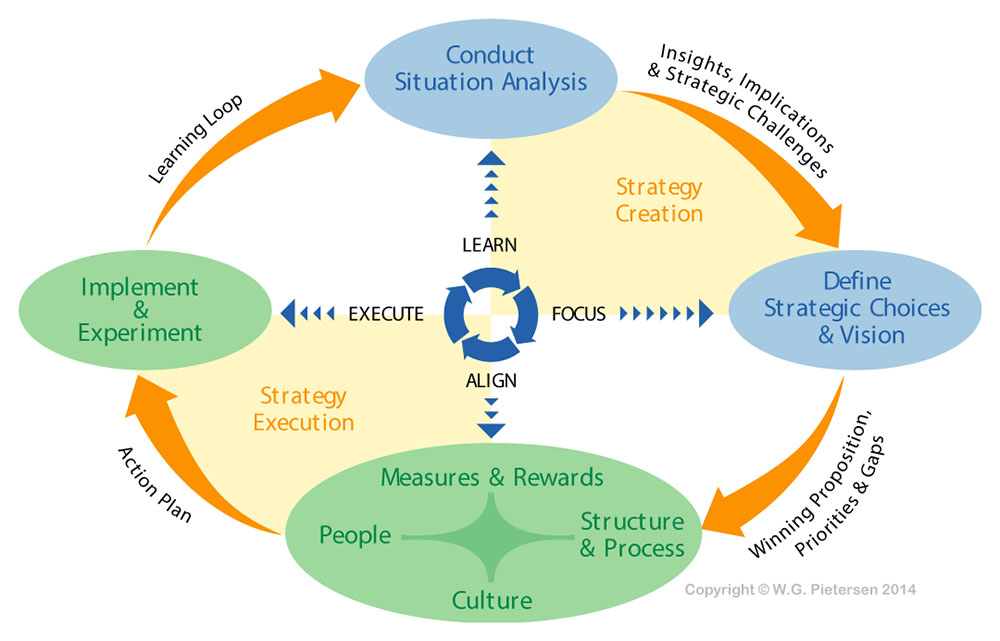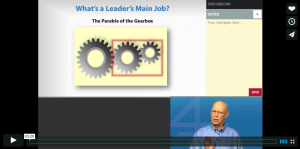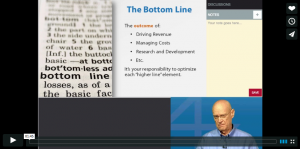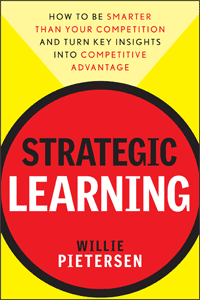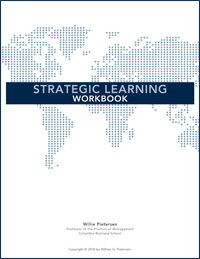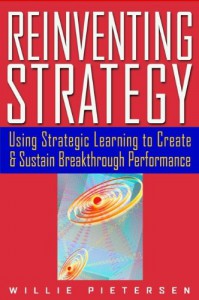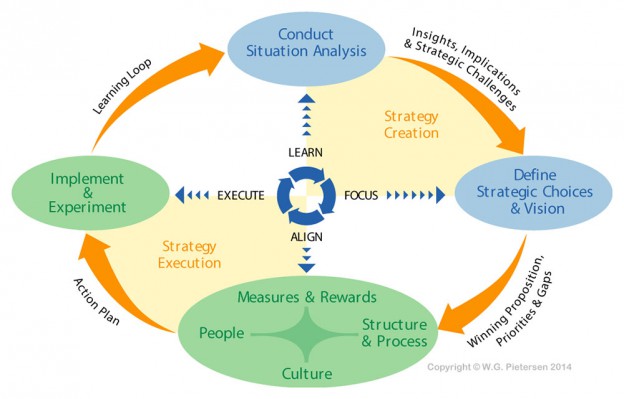
The rules of success have changed. Sustainable competitive advantage no longer lies simply in a new product or service. It is an organizational capability to be adaptive. The new role of strategy is to provide the practical process and tools to help us build and lead adaptive organizations.
Strategic Learning is a process that I developed for creating and implementing breakthrough strategies on an ongoing basis to create an adaptive organization.
The process has been used successfully at notable companies such as Ericsson, SAP, De Puy, ExxonMobil, Deloitte, Federal Home Loan Bank of Atlanta, UGI, Chubb Corporation, Aviva, and The Girl Scouts of America. It is also the core methodology for executive education programs at the Columbia Business School.
As illustrated, the process has four linked steps-learn, focus, align and execute-which build on one another and are repeated in a continuous cycle.
The first two steps form the basis of a firm’s strategy creation. The third and fourth steps are the foundations of strategy implementation. Thus, strategy creation and implementation are integrated into a mutually reinforcing process. Strategic Learning is a leadership process that generates a cycle of ongoing discovery and adaptation. It strives to balance focus with flexibility, and thoughtful analysis with creative thinking which is continually sharpened through learning and experience. It is designed to engage the creative and intellectual energies of the organization as broadly as possible.
Step One: The Situation Analysis (Learn)
All breakthrough strategies are based on superior insight. Therefore, the essential starting point in the Strategic Learning process is what I call the Situation Analysis-a systematic exercise in diagnostic learning. Its aim is very specific: to develop superior insights as the basis for the firm’s strategic choices. The search for superior insight is where the competitive battle begins. Lose this battle, and you are likely to lose the war.
The goal of this step is to create asymmetry between a company and its competitors-to understand the competition, the marketplace, and the customers better than the competition does. These superior insights will enable a firm to make the most intelligent choices and to define its winning proposition-its statement of how it will win the competition for value creation.
The Situation Analysis is a process of divergent learning with an outside-in focus, conducted by cross-functional teams who are charged with generating superior insights in the following key areas:
Customers
Guiding Questions: Customers
- What are the trends in customer expectations?
How is today different from yesterday?
How will tomorrow be different from today? - What are useful ways to segment customers?
Which segments will we target? Which not? - What is the hierarchy of needs of our targeted customers?
(i.e., What do they value most?) - How well do we and competitors serve those needs today?
(S=Strong, M=Moderate, P=Poor)
Key Stakeholders
Guiding Questions: Key Stakeholders
- Who are our key stakeholders for whom value creation is a
condition for success? - What are the trends in stakeholder expectations?
How is today different from yesterday?
How will tomorrow be different from today? - What is the hierarchy of stakeholder needs?
What do they value most? - How well do we currently serve those needs?
(S=Strong, M=Moderate, P=Poor)
Industry Dynamics
Guiding Questions: Industry Dynamics
- Which trends are most important in shaping the structure of our
industry?
What are their root causes and ultimate consequences? - How are these trends changing the rules of success?
- What threats do these trends present to our profitability and
business model?
What opportunities do they open up?
The Broader Environment
Guiding Questions: The Broader Environment
What’s happening around us that will impact our business in
regard to:
- Economic trends
- Social habits and attitudes
- Globalization
- Technology
- Demographics
- Government intervention
Own Realities
Guiding Questions: Own Realities
- What are the five-year trends on our critical performance
measures, and what conclusions can we draw from them? - Where are we making money and where not? (This question
requires separation of profit and cash flow by customer, product
group, geography – Averages tell you nothing.)
Are we addressing our losing propositions? - What are our key strengths that we can leverage for competitive
advantage?
What are our weaknesses that represent barriers to better
performance?
The technique is to ask and answer the right questions-penetrating questions that will provoke insights. The aim is to scan and interpret the firm’s external environment and its internal realities in a combination of analysis and creative brainstorming. The emphasis is on challenging existing assumptions and producing fresh, innovative thinking. It is important to probe and explore, always searching for trends, root causes, and ultimate consequences-not just stacks of data.
The insights derived from the Situation Analysis enable the organization to define the key business issues it faces and the alternative options for tackling those issues. This sets up the decision-making stage that constitutes step two of the Strategic Learning process.
Step Two: Strategic Choices (Focus)
The Strategic Choices are the key deliverables of strategy creation. They are based on the insights generated in the Situation Analysis and represent the strategic focus of the firm.
The heart of the Strategic Choices is the firm’s Winning Proposition. It answers the question, “What will we do differently or better than our competitors to achieve greater value for our customers and superior profits for our firm?”
Here is one of the places where strategy and leadership most directly intersect. One of the crucial skills of the leader is the ability to distill a company’s strategic focus into a simple, compelling Winning Proposition which anyone can understand and follow.
Step Three: Align the Organization (Align)
Once the Strategic Choices have been clearly defined, it is necessary to tackle strategy implementation. In large, complex organizations, this can be a daunting leadership challenge. For many executives, this is the hardest part of all.
Successful implementation requires that all the key supporting elements of the business system, including Measures and Rewards, Structure and Process, Culture, and People, be aligned behind the chosen strategy. At any given moment, the existing alignment has been put in place over time to support yesterday’s strategy. It is now essential to realign the business system behind tomorrow’s strategy. Otherwise, that strategy will fail.
Step Four: Implement & Experiment (Execute)
Step four is the actual implementation phase of Strategic Learning. It should include a deliberate set of experiments to fuel organizational learning. You can never know for sure what is going to work. Just as the Darwinian process of evolution is based on constant experimentation through variation, selection, and retention, so adaptive organizations must maximize their chances of finding favorable strategic variations through continuous experimentation.
Step four then feeds back into the Situation Analysis. The firm updates its insights, learning by examining its own actions and by re-scanning the environment, and then modifies its strategies accordingly. The process never stops.
Think Cycle … Not Straight Line
Strategic Learning rests on the proposition that the ability to learn and adapt is the only sustainable competitive advantage in today’s turbulent world. The key is to think cycle – not straight line. Simply following the Strategic Learning process once is not enough. The leadership challenge is to repeat it over and over, so that an organization continuously learns from its own actions and from scanning the environment, and then modified its strategies accordingly. The more often an organization repeats this cycle, the better it will become at doing it, thus enhancing its adaptive capacity. The result is a process of ongoing renewal that characterized the truly adaptive organization.







